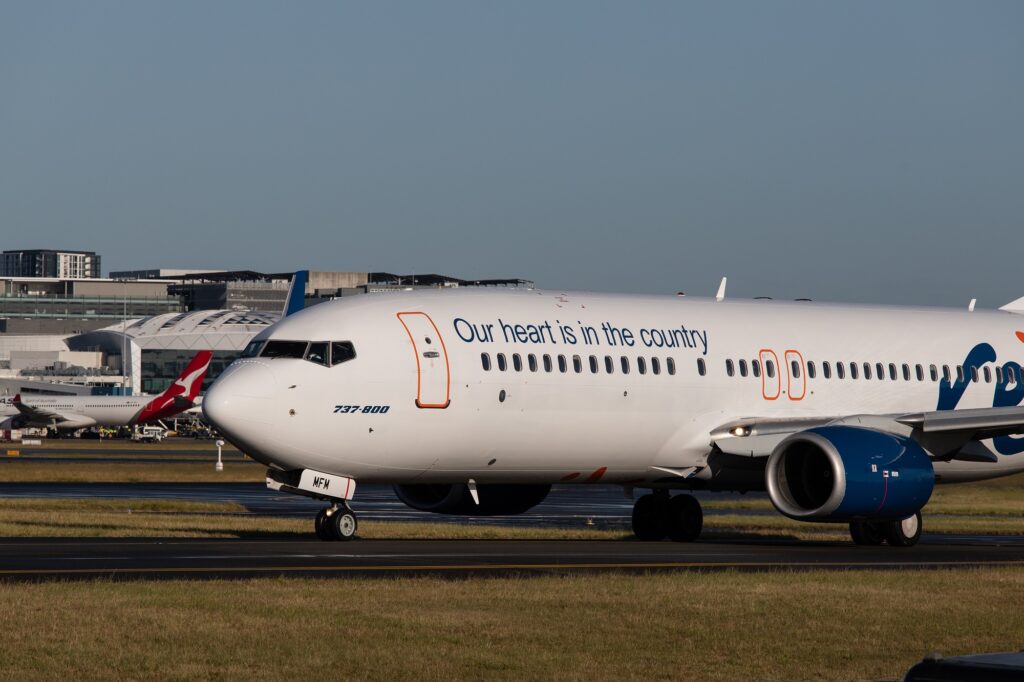Regional Express (Rex) announced that it has submitted a proposal to the Australian Antarctic Division (AAD) to become the next operator to fly researchers from Australia to the Antarctic.
According to the airline, which expanded into jet operations fairly recently, it submitted a response to the Request for Information (RFI) issued by the AAD to “be the next aerial operator of the Australian Antarctic Program”.
Rex noted that the next season’s program is the “most ambitious ever in AAD’s history”, with the goal to bring all highly specialized aerial operations under one operator’s command. As such, the AAD wants to use “one large intercontinental passenger jet capability, four intracontinental turbo-prop aircraft able to operate on skis, four twin-engine helicopters which can operate both on land and on the Division’s flagship the RSV Nuyina, plus a significant scaling up of Uncrewed Aerial System or UAS capability for the Division’s operations during the Antarctic Austral Summer (October to March),” according to Rex.
Recognizing the challenges that will arise from participating in the eventual Request for Tender (RFT) in November 2023, Rex said it had “assembled an Antarctic Advisory Panel (AAP) comprising the foremost experts in this field with in-depth and practical knowledge of actual aerial operations to the Antarctic”. The panel’s expertise includes knowledge of how to adapt aerial platforms with skis that would be suitable for landing on the terrain in the Antarctic.
“This ambitious and challenging Program requires an operator that has deep knowledge of aviation across a whole range of platforms as well as proven organisational excellence in operating special missions,” said Craig Martin, the airline’s Antarctic Project Manager.
“We believe there is no better Australian candidate than the Rex Group with its expertise in operating a fleet of 150 aircraft in every State, ranging from Boeing 737-800NG, Embraer E190 airliners, De Havilland Dash 8-400 turboprops, over 55 Saab 340 turboprops, one of the largest fleet of Beechcraft King Air aircraft in Australia, and the recently introduced Pilatus PC24 jets,” Martin added.
The project manager also said that Rex had “deep knowledge of special mission work”, with the airline having flown for the Australian Department of Defence for 20 years, as well as providing aeromedical services for over 12 years for the governments of New South Wales and Victoria, Australia.
“Rex intends to lead a consortium of industry partners that will operate some aspects of the Program that require more specialised expertise,” the airline concluded.
The Australian Antarctic Program (AAP) is a collaborative partnership between the government and more than 150 national and international research institutions, which aims to understand the world’s climate and the effects of climate change by conducting research in the Antarctic.
According to the AAP, during the previous season, an Airbus ACJ319, registered as VH-VHD, and a Boeing C-17 Globemaster III belonging to the Royal Australian Air Force (RAAF), operated flights between Australia and the Antarctic. The AAP also stated that “BT-67 Basler and DHC-6 Twin Otter ski equipped aircraft have been contracted for intra-continental operations capability since 2010”.
The aircraft “work closely with AS 350 B3 ‘Squirrel’ helicopters to provide support to a range of projects”.

